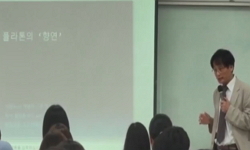This article is an attempt to look into cultural workings of cosmetic surgery in South Korea. Beginning with some historical contexts, I argue that Koreans’ obsessive investment in appearance has important bearings on the recent shift of the nation ...
http://chineseinput.net/에서 pinyin(병음)방식으로 중국어를 변환할 수 있습니다.
변환된 중국어를 복사하여 사용하시면 됩니다.
- 中文 을 입력하시려면 zhongwen을 입력하시고 space를누르시면됩니다.
- 北京 을 입력하시려면 beijing을 입력하시고 space를 누르시면 됩니다.

Race and Gender Politics of South Korea’s Cosmetic Surgery Culture = Race and Gender Politics of South Korea’s Cosmetic Surgery Culture
한글로보기https://www.riss.kr/link?id=A105375433
- 저자
- 발행기관
- 학술지명
- 권호사항
-
발행연도
2018
-
작성언어
-
- 주제어
-
KDC
800
-
등재정보
KCI등재
-
자료형태
학술저널
- 발행기관 URL
-
수록면
335-363(29쪽)
- DOI식별코드
- 제공처
-
0
상세조회 -
0
다운로드
부가정보
다국어 초록 (Multilingual Abstract)
This article is an attempt to look into cultural workings of cosmetic surgery in South Korea. Beginning with some historical contexts, I argue that Koreans’ obsessive investment in appearance has important bearings on the recent shift of the nation into a multiethnic society. In the new racial imaginary, upper- and middle-class Koreans are urged to adopt multicultural whiteness. Persistent popularity of double eyelid and nose procedures, as well as the increasing demand of dangerous bone contouring, implies racial connotations of cosmetic surgery. Appearance in this way tends to function as a new discriminatory apparatus in contemporary Korea while multicultural whiteness has become symbolic capital that consolidates ethno-racial hierarchy. Further, I examine lookism’s deeper cultural meanings related to gender politics in Korea, with a focus on the recent upsurge of misogynist hate speech and feminist reaction.
동일학술지(권/호) 다른 논문
-
- 국제비교한국학회
- 로익알르와지오 ( Loic Aloisio )
- 2018
- KCI등재
-
2011년에서 2016년까지 프랑스에서의 ‘후쿠시마 이후’ 일본문학의 번역과 수용 양상
- 국제비교한국학회
- 세실뒤켄 ( Cecile Duquenne )
- 2018
- KCI등재
-
- 국제비교한국학회
- 웬헤 ( Wen He )
- 2018
- KCI등재
-
- 국제비교한국학회
- 피에르카제르 ( Pierre Kaser )
- 2018
- KCI등재





 KISS
KISS




